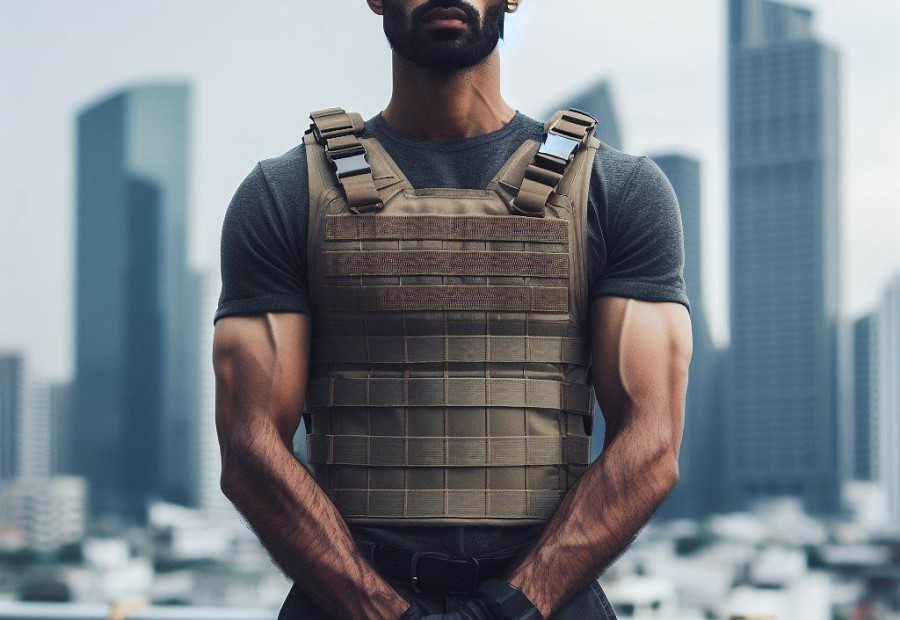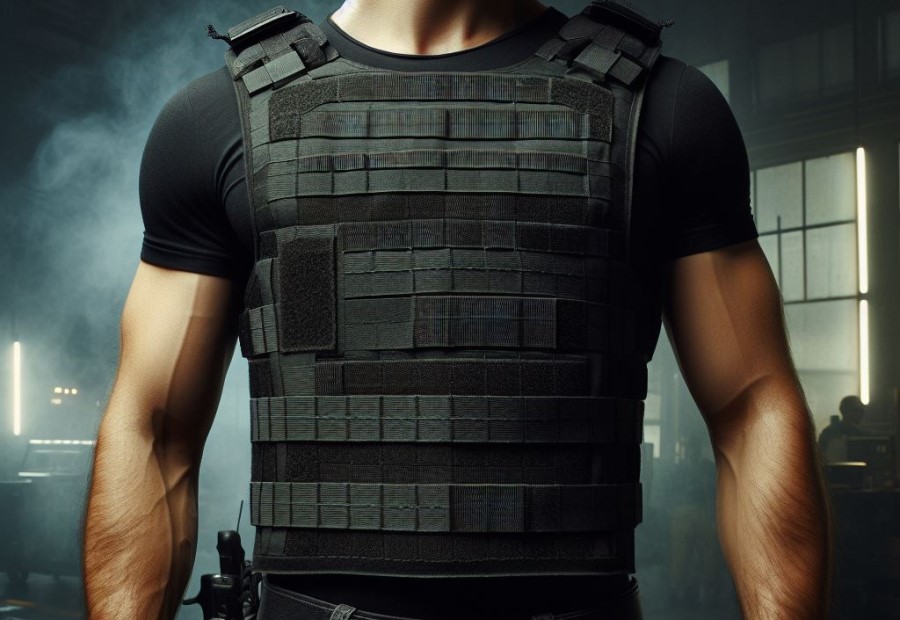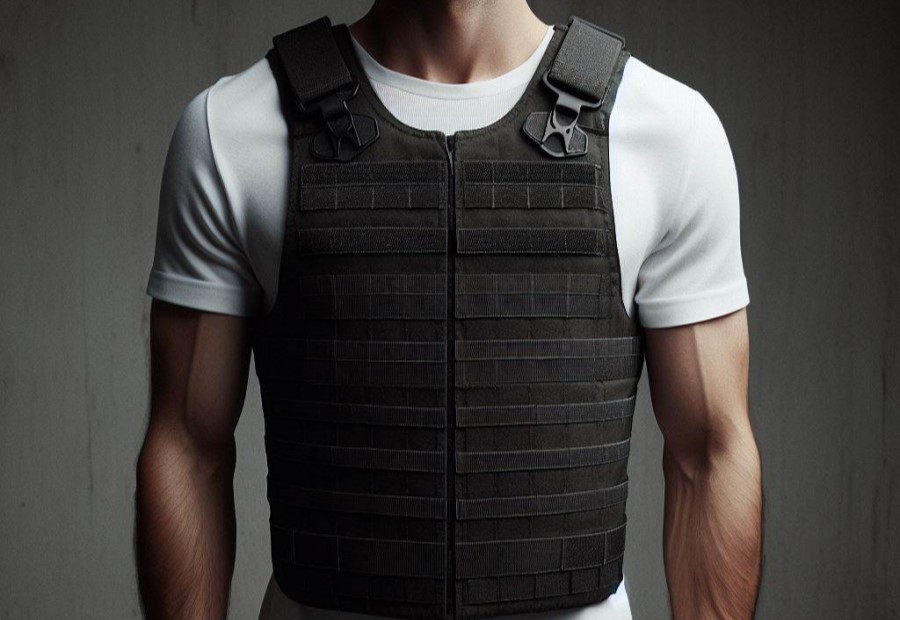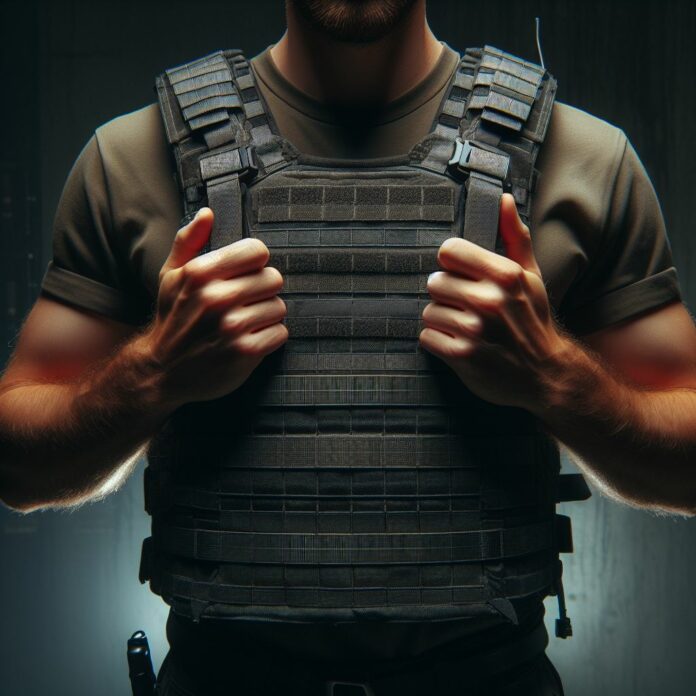Bulletproof vests play a crucial role in protecting individuals from potential threats, especially for those working in high-risk professions or engaging in dangerous activities.
When it comes to selecting a bulletproof vest, finding the best lightweight option is often a priority. A lightweight bulletproof vest offers the advantage of being more comfortable, allowing greater mobility without sacrificing protection levels.
To understand what makes a bulletproof vest lightweight, it is important to examine the materials used in construction and the design and layering techniques employed.
The choice of materials and the strategic combination of layers contribute to the overall weight reduction of these vests.
When choosing the best lightweight bulletproof vest, certain factors should be considered. These include the level of protection required, the comfort and fit of the vest, its durability and longevity, concealability for covert operations, and cost-effectiveness.
Once you have chosen the right lightweight bulletproof vest, it is essential to know how to wear and maintain it properly.
By understanding the factors that contribute to the lightweight nature of bulletproof vests and considering the important aspects when choosing one, you can confidently make an informed decision to select the best lightweight bulletproof vest that suits your specific needs.
What Makes a Bulletproof Vest Lightweight?

Materials Used in Construction
Bulletproof vests utilize a variety of materials to provide effective protection while also being lightweight and comfortable to wear. Some common materials used in the construction of lightweight bulletproof vests include:
- Aramid fibers: These synthetic fibers, such as Kevlar and Twaron, are known for their high strength and resistance to impact. Aramid fibers are lightweight and flexible, allowing for ease of movement while maintaining optimal protection.
- Polyethylene: High-density polyethylene (HDPE) fibers are another popular choice for bulletproof vests. Polyethylene offers excellent ballistic resistance while remaining lightweight. It also has a high melting point, ensuring durability in extreme conditions.
- Ceramic plates: In some bulletproof vests, ceramic plates are used to enhance protection against high-velocity projectiles. These plates are typically made from materials like boron carbide or silicon carbide, which can effectively stop bullets while adding minimal weight.
- Composite materials: Bulletproof vests may also combine different materials to achieve optimal performance. For example, a vest may incorporate layers of aramid fibers and polyethylene to take advantage of their respective strengths and properties.
Design and Layering
The design and layering of a lightweight bulletproof vest are critical components that contribute to its effectiveness and comfort.
- Material selection: High-performance fabrics like Kevlar or Dyneema are commonly chosen for constructing lightweight bulletproof vests. These materials possess remarkable durability, lightness, and a high strength-to-weight ratio, which make them ideal for providing protection.
- Layering: Lightweight bulletproof vests are designed with multiple layers of material to ensure enhanced protection. Each layer possesses distinct properties, such as ballistic resistance or energy dispersion, enabling it to effectively counter different types of threats.
- Strategic placement: The vest’s design takes into account the body’s vital organs, concentrating protection in areas that are most vulnerable to injury. For instance, thicker ballistic panels are often positioned in the front and back, while thinner panels are utilized on the sides to maintain mobility.
- Ergonomic considerations: The vest’s design considers the wearer’s comfort and range of motion. Features like adjustable straps, shoulder pads, and lightweight materials contribute to evenly distributing the weight and preventing fatigue during extended periods of use.
- Proper ventilation: The design incorporates elements that improve airflow and breathability, such as mesh panels or moisture-wicking fabrics, especially crucial in hot and humid environments for enhanced comfort.
When selecting a lightweight bulletproof vest, it is important to consider the design and layering to ensure optimal protection and comfort.
Look for vests that utilize high-performance materials, have strategic layering, prioritize ergonomic features, and offer proper ventilation. These factors will enhance your safety and overall experience while wearing the vest.
Factors to Consider when Choosing the Best Lightweight Bulletproof Vest

Level of Protection
When choosing the best lightweight bulletproof vest, the level of protection is a crucial factor to consider. The table below provides information on the different levels of protection offered by bulletproof vests:
| Level | Description | Protection against |
| Level I | Offers the lowest level of protection | Most handguns, such as .22 and .380 caliber |
| Level II | Provides protection against higher velocity handguns | 9mm and .357 Magnum |
| Level IIIA | Offers protection against most handguns and some high-velocity rifles | .44 Magnum and 9mm submachine gun |
| Level III | Provides protection against rifles with larger calibers | 7.62mm NATO and .308 Winchester |
| Level IV | Offers the highest level of protection | Armor-piercing rounds such as .30-06 AP and .338 Lapua Magnum |
It is important to assess the level of threat you may encounter to determine the appropriate level of protection needed.
Consider factors such as the type of firearms commonly encountered in your environment and the specific risks you face. Selecting a vest with a higher level of protection may offer increased security but could also result in added weight and reduced mobility.
Comfort and Fit
The comfort and fit of a lightweight bulletproof vest are crucial for maximum effectiveness and usability. Here are factors to consider when evaluating the comfort and fit of a vest:
- Adjustability: Look for vests with adjustable straps and fastenings to ensure a customized fit on your body.
- Weight distribution: A well-designed vest will distribute the weight evenly across your torso, minimizing strain on specific areas.
- Range of motion: Consider vests that allow for a full range of motion, enabling you to move comfortably and perform tasks without restrictions.
- Padding and cushioning: Vests with adequate padding and cushioning provide added comfort and protection against impact.
- Breathability: Opt for vests that have breathable materials and ventilation systems to prevent overheating and excessive sweating during extended wear.
- Ergonomic design: Vests with ergonomic features, such as contoured panels and shoulder straps, enhance comfort and prevent chafing or rubbing.
- Proper sizing: Choosing the right size is essential for comfort and proper protection. Ensure the vest fits snugly without being too tight or restrictive.
- Customizable options: Some vests offer additional customization options, such as removable panels or adjustable cummerbunds, allowing you to tailor the fit to your specific needs.
When selecting a lightweight bulletproof vest, prioritize comfort and fit to ensure that you can wear it comfortably for extended periods and move freely without compromising protection.
Durability and Longevity
Durability and longevity are crucial factors to consider while choosing the best lightweight bulletproof vest. Here are some important points to keep in mind:
1. Quality of Materials: Look for vests made from high-quality, durable materials such as Kevlar or Dyneema. These materials are known for their strength and resistance to wear and tear.
2. Stitching and Construction: Pay attention to the stitching and overall construction of the vest. Double or reinforced stitching can enhance the durability of the vest, ensuring it stays intact even under high-stress conditions.
3. Coatings and Treatments: Some vests may have special coatings or treatments that enhance their durability by providing resistance against water, UV rays, and abrasions. These coatings can extend the lifespan of the vest.
4. Certification Standards: Consider vests that meet recognized certification standards for durability and longevity, such as NIJ (National Institute of Justice) standards. These standards ensure that the vest has undergone rigorous testing to withstand various impacts and conditions.
5. Warranty and Manufacturer Reputation: Check if the vest comes with a warranty that covers any defects or damages. Additionally, research the reputation of the manufacturer to ensure they have a track record of producing durable and long-lasting vests.
Pro-tip: Regularly inspect and maintain your bulletproof vest to maximize its durability and longevity. Follow the manufacturer’s guidelines for cleaning, storage, and care to ensure it remains in optimal condition.
Concealability
Concealability in lightweight bulletproof vests is a key consideration for individuals who need protection while maintaining a low profile. Here are some key points to keep in mind regarding concealability:
- Thickness and weight: A slim and lightweight design is typically associated with a lightweight bulletproof vest, making it easier to conceal under clothing.
- Flexibility and mobility: Look for vests made from flexible materials that can adapt to your body shape and provide freedom of movement, allowing for better concealment.
- Color and design: Opt for vests that come in colors that blend well with your clothing choices. Neutral tones such as black, white, or beige offer versatility and can be easily concealed.
- Strategic placement of panels: Some vests feature removable panels that can be strategically placed in specific areas for optimal concealment. This customization allows you to adjust the vest according to your needs.
- Adjustable straps and closures: Vests with adjustable straps and closures ensure a secure and snug fit, preventing shifting or bulging that could compromise concealment.
By considering these factors, you can select a lightweight bulletproof vest that offers excellent concealability while providing the necessary protection.
Cost
The cost is a crucial factor to consider when choosing the best lightweight bulletproof vest. It is important to find a vest that fits within your budget without compromising on quality and protection.
It is essential to balance your needs with your budget to make an informed decision. When considering the cost, it is crucial to remember that a higher price does not always guarantee better quality or enhanced protection.
Evaluate the level of protection, comfort, and durability offered by each vest option to determine the best value for your money.
Remember to prioritize your safety and consider all the factors mentioned when selecting the best lightweight bulletproof vest for your needs.
Tips for Wearing and Maintaining a Lightweight Bulletproof Vest

Proper Vest Placement
Ensuring proper vest placement is crucial for optimizing the protection and functionality of a lightweight bulletproof vest. Follow these steps to correctly place your vest:
- Start by choosing the appropriate vest size based on your body measurements.
- Put on the vest and make sure that the front and back panels are correctly aligned.
- Adjust the shoulder straps to achieve a snug fit, ensuring they are neither too tight nor too loose.
- Tightly secure the waist straps to prevent the vest from shifting during movement.
- Verify that the vest covers your vital organs, including the chest, abdomen, and lower back.
- Position the collar of the vest correctly to protect your neck area.
- After placing the vest properly, assess its range of motion to ensure it does not restrict your movements.
- Carefully check all straps and fastenings to ensure they are securely in place.
By following these steps for proper vest placement, you will enhance the effectiveness of the vest and achieve the highest level of protection while maintaining comfort and mobility.
Regular Cleaning and Inspections
- Inspect the vest regularly for any signs of damage, such as tears, punctures, or loose stitching. These can compromise the vest’s ability to provide protection and should be repaired or replaced immediately.
- Follow the manufacturer’s instructions for cleaning the vest. Ensure to clean the vest regularly and inspect it for any signs of damage. Most vests can be wiped down with a damp cloth or sponge, but some may be machine washable. Make sure to remove any trauma plates or inserts before cleaning.
- Pay special attention to the Velcro straps or fasteners on the vest. Regularly clean and inspect these straps as they can accumulate dirt and debris over time, which can affect their performance. Clean them with a soft brush or toothbrush to ensure they are functioning properly.
- Allow the vest to air dry completely before storing it. After regular cleaning and inspections, it is important to let the vest dry thoroughly. Avoid exposing it to direct sunlight or high heat, as this can damage the materials. Hang it on a sturdy hanger or lay it flat to maintain its shape.
- Regularly check the expiration date or recommended lifespan of the vest. Over time, the materials may degrade and become less effective. Along with regular cleaning and inspections, it is crucial to monitor the vest’s expiry date or signs of wear and tear. Replace the vest if it has reached its expiration date or if it shows signs of wear and tear.
Regular cleaning and inspections not only keep the vest in optimal condition but also ensure that it is ready to provide the necessary protection when needed.
Storage and Care
Proper storage and care are crucial when it comes to maintaining the effectiveness and longevity of a lightweight bulletproof vest. Here are some important considerations:
- Storage: Always store the vest in a cool, dry place away from direct sunlight. This helps to prevent any damage to the materials and keeps the vest in optimal condition.
- Cleaning: Regularly clean the vest according to the manufacturer’s instructions to remove any dirt, sweat, or debris that may accumulate. This helps to maintain the integrity of the materials and ensures the vest is ready for use at any time.
- Inspections: Conduct regular inspections to check for any signs of wear, tear, or damage. Pay special attention to the panels, straps, and fastening systems. If any issues are detected, contact the manufacturer for repairs or replacement.
- Repairs: If the vest becomes damaged or compromised in any way, it should be repaired immediately. Do not attempt any repairs yourself unless you have the proper training and expertise.
- Replacement: Over time, the effectiveness of bulletproof materials may degrade. It is essential to follow the manufacturer’s guidelines regarding the lifespan of the vest and replace it accordingly to ensure continued protection.
By following these guidelines for storage and care, you can ensure that your lightweight bulletproof vest remains in optimal condition and provides you with the necessary protection when needed.
Frequently Asked Questions
What is the best lightweight bulletproof vest?
The best lightweight bulletproof vest on the market is ShotStop’s Duritium Level III+PA plate. It offers reliable protection while being significantly lighter than competitor plates, weighing only 5.4 lbs.
How do I determine if a body armor is NIJ compliant?
To determine if a body armor is NIJ compliant, you can check the CJETC Body Armor Compliant Page or look for the NIJ seal on the back of the armor plate. This ensures that the armor meets the necessary standards for safety and effectiveness.
What factors should I consider when buying a bulletproof vest?
When buying a bulletproof vest, it is important to consider factors such as the degree and type of protection needed, the recommended protection level based on NIJ ratings, sizing and fit, comfort, mobility, concealability, weight, durability, and cost.
Are lightweight body armor vests legal for law-abiding American citizens to purchase?
Yes, there is no federal law preventing law-abiding American citizens from purchasing or wearing level 3 body armor. However, it is crucial to check your state’s laws regarding the possession and use of body armor.
What are the advantages of concealable bulletproof vests?
Concealable bulletproof vests offer discreet tactical protection and are suitable for situations where visibility may cause panic or send the wrong message. They provide extreme concealability while still offering the necessary level of protection.
How should I care for my bulletproof vest to maintain its performance?
To care for your bulletproof vest and maintain its performance, avoid using bleach, dry cleaning, bar soaps, cleaning chemicals, and household detergents.
Follow the manufacturer’s instructions for proper care and cleaning to ensure the longevity of your vest.

